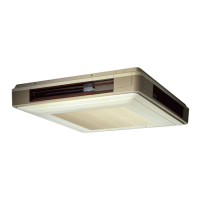Why Daikin FUQ100CVEB Air Conditioner operates but it does not sufficiently cool or heat?
- DDenise MillerAug 18, 2025
If your Daikin Air Conditioner is running but not cooling or heating effectively, consider these potential causes: * Obstructions: Check if the air inlet or outlet of either the outdoor or indoor unit is blocked. If so, remove the obstacle to ensure proper ventilation. * Dirty Air Filter: A clogged air filter can restrict airflow. Ask a qualified service person to clean the air filters. * Improper Settings: Make sure the temperature, fan speed, and airflow direction are appropriately set. * Open Doors/Windows: Ensure doors and windows are closed to prevent drafts. * Direct Sunlight: Use curtains or blinds to block direct sunlight, which can affect cooling performance.





